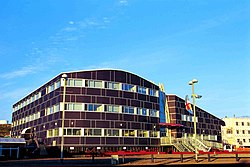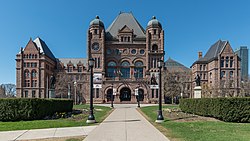 |
|---|
This is a list of the legislative assemblies of Canada's provinces and territories. Each province's legislative assembly, along with the province's lieutenant governor, form the province's legislature (which is called a parliament or general assembly in some provinces). Historically, several provinces had bicameral legislatures, but they all eventually dissolved their upper house or merged it with their lower house, so that all provincial legislatures are now unicameral.
Contents
- Current legislative assemblies
- Provincial legislative assemblies
- Territorial assemblies
- Autonomous area assemblies
- Gallery
- Current composition of legislative assemblies
- Past legislative chambers
- Past legislative chambers of provinces and territories
- Past assemblies of former territories and colonies
- Notes
- References
Members of the legislative assemblies of Canada's provinces and territories are called by various names. In most provinces and all three territories, they are called Members of the Legislative Assembly (MLAs) in English. In Ontario, they are called members of Provincial Parliament (MPPs); in Quebec, they are called members of the National Assembly (MNAs); and in Newfoundland and Labrador, they are called members of the House of Assembly (MHAs).
The legislative assembly with the most members is the National Assembly of Quebec, which consists of 125 MNAs. The provincial legislative assembly with the fewest members is the Legislative Assembly of Prince Edward Island, which consists of 27 MLAs. All of the legislative assemblies of Canada's territories have fewer members than that of Prince Edward Island.














